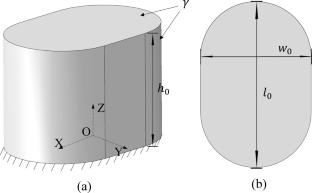Effects of surface tension on the shape distortion of photo-cured micro-struts: finite-element modeling
Abstract
Light-based 3D printing techniques have recently been used to construct soft materials like hydrogels into complex architectures. However, when these extremely soft materials are printed into fine structures with feature sizes as small as microscale or even nanoscale, the resulting structures may be distorted by surface tension, which comes into play when the surface energy exceeds the material’s bulk elastic energy. In order to elucidate the basic effects of surface tension on shape distortion, we here develop a finite-element modeling method to study the difference between the resulting shape and designed shape of a photo-cured micro-strut. This method relies on a continuum framework that efficiently considers the evolution of material properties and the action of surface tension during the photo-curing process. The modeling results show that the resulting shape of the micro-strut is highly correlated with the strength of the surface tension, which can sometimes hinder the undesired deformation caused by the volume shrinkage associated with photo-polymerization. This study can provide some basic understanding for the reduction of shape distortion in printing soft materials with microscale and nanoscale features, and facilitate the design of devices with better performance.


 求助内容:
求助内容: 应助结果提醒方式:
应助结果提醒方式:


